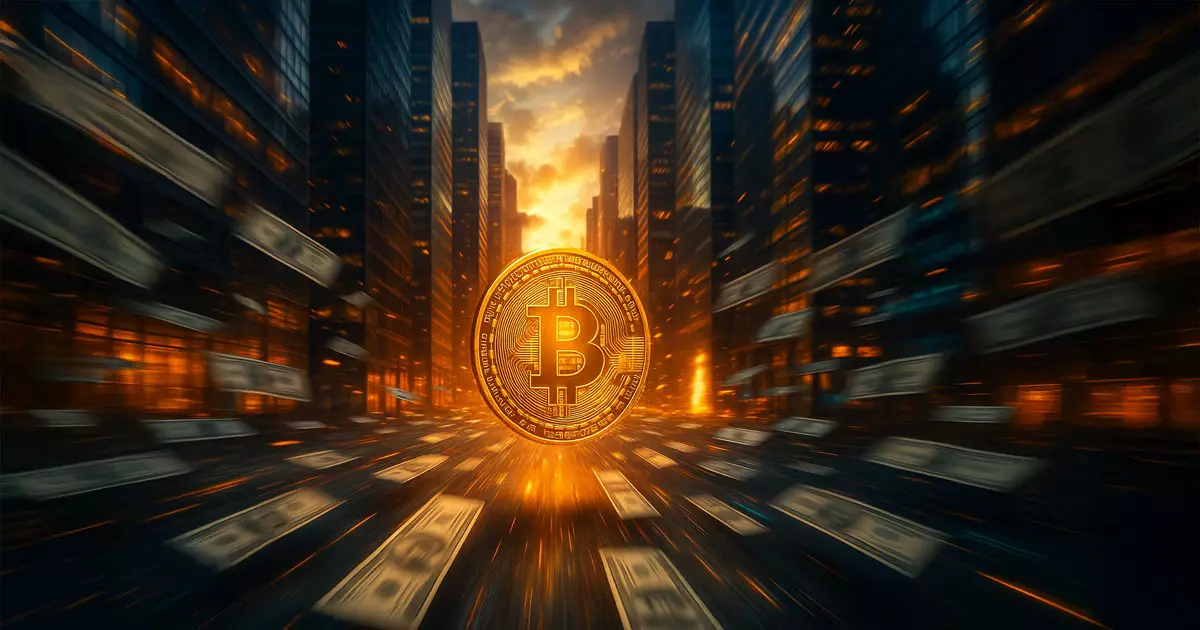In a striking revelation, recent data from CryptoQuant analyst Darkfost indicates that Binance’s monthly Bitcoin (BTC) inflows have plummeted to a mere 5,700 BTC. This astonishing figure is less than half the 12,000 BTC average that has defined the market landscape since 2020. It’s crucial to consider the broader implications of such a downward trend in inflows, especially in contrast to the frantic 24,000 BTC influx witnessed during the FTX crisis in late 2022. Such metrics not only serve as indicators of market sentiment but also highlight the behavioral shifts of traders in a turbulent economic climate.
The Psychology of Trading Behavior
Darkfost’s analysis reveals a consistent pattern: substantial deposits tend to coincide with local price peaks. This historical perspective sheds light on why the recent inflow of 5,700 BTC arrives while Bitcoin’s price hovers above $105,000, and volatility sits at year-to-date lows. Lower inflows suggest a strategic withdrawal from immediate selling pressure, wherein both retail and institutional traders appear to be adopting a “holding phase.” This behavior speaks volumes about market psychology; fewer coins on exchanges mean traders are less inclined to liquidate, indicating a growing sense of confidence among holders.
The Ripple Effect on Market Dynamics
The dynamics surrounding Binance, the juggernaut of spot trading venues, further exacerbate this narrative. With Binance accounting for an impressive 37% of all centralized exchange trading volumes this year, its deposit trends serve as an influential barometer for market intentions. A decline in inflows suggests that holders are content keeping their assets off the exchange, thereby controlling supply. Moreover, this has significant implications for market stability; thin order books coupled with sustained demand could drive prices upward more readily than in a saturated market.
Questioning Macroeconomic Influences
While the prevailing data indicates a calm before the storm, caution is warranted. Darkfost’s smoothing techniques aimed at filtering out distortions from macroeconomic influences remind us that external factors can still potentially rock the boat. The recent tensions in global geopolitics have the potential to instigate sudden shifts in market behavior, introducing an element of unpredictability. Traders must remain vigilant: a spike in deposits back toward the long-term average of 12,000 BTC could signal a return to distribution, stoking fears of a market correction.
A Call for Rational Optimism
In the ever-evolving landscape of cryptocurrency, it is essential to appreciate the nuances of market trends. The current low inflow scenario encourages a cautious, yet optimistic stance for Bitcoin enthusiasts. The reduced activity on Binance can be interpreted not as a sign of waning interest, but rather as a strategic pause. Traders today might be leveraging this moment to accumulate rather than liquidate, implying a simmering bullish sentiment beneath the surface.
The narrative emerging from these metrics accentuates the need for critical thinking. Cryptocurrency is not merely a speculative asset but a revolutionary technology. While market fluctuations can indeed evoke anxiety, the current situation hints at underlying stability—a rarity in the chaotic world of crypto. As we move forward, maintaining a discerning eye on inflow trends will be vital for navigating the facets of this volatile ecosystem.















